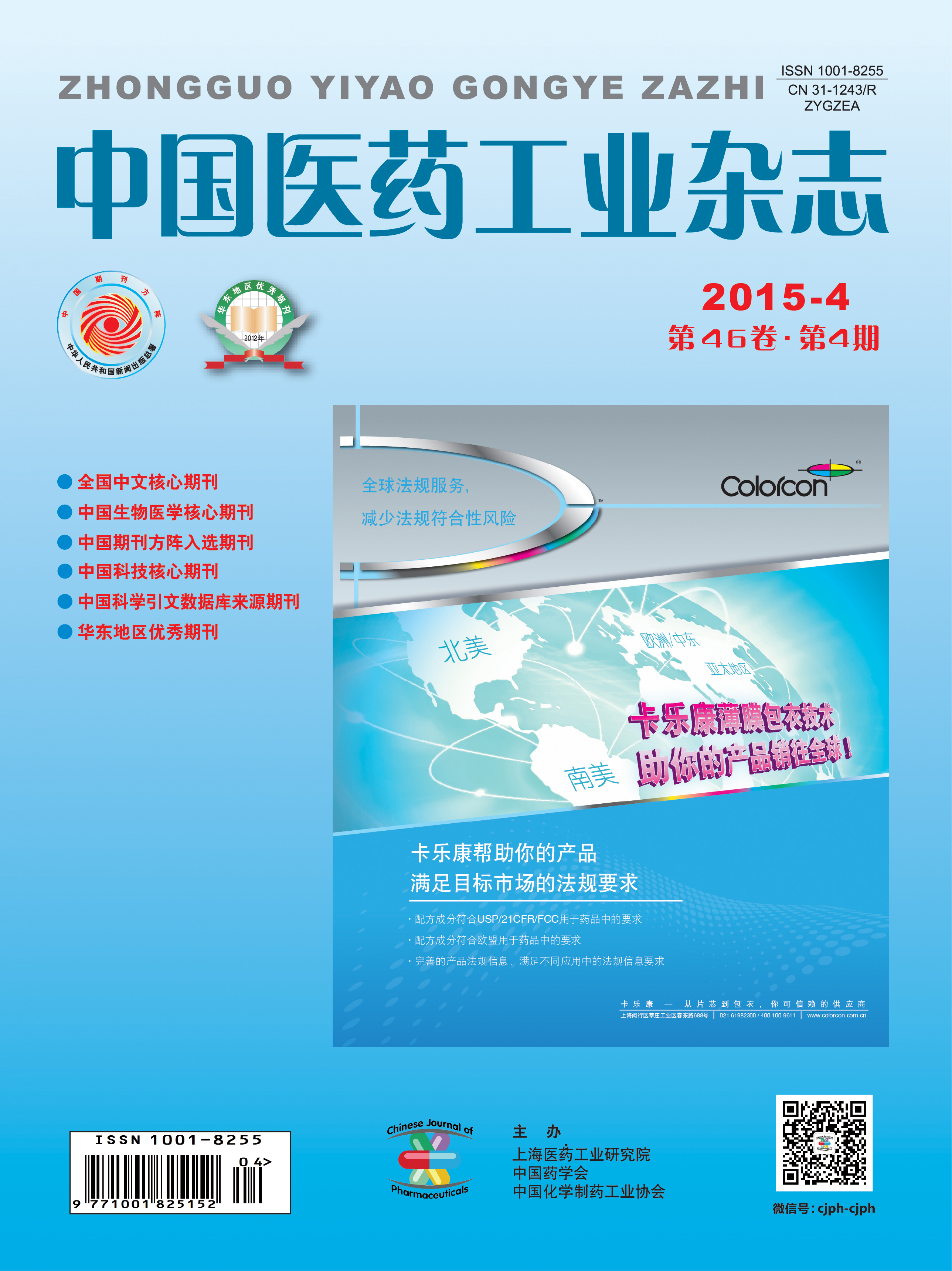SHEN Weiyang1, DOU Xiaorui1, CHEN Lingfang1, SHEN Puyi2, SHI Rui2
2015, 46(4): 391-395.
An HPLC method was established for the determination of related substances in (S)-pantoprazole sodium (1) enteric-coated tablets, including related substances A, B, C, D&F and E. A C18 column was used, with the mobile phase of ammonium buffer (ammonium acetate 3.85 g and tetrabutylammonium hydrogen sulfate 1.1 g in 1 L water, and adjusted to pH 7.9 by ammonium hydroxide)∶acetonitrile (65∶35), at the detection wavelength of 290 nm. 1 was separated well from the above related substances and degradation products. The calibration curves for related substances A, B, C, D&F and E were linear in the ranges of 0.080 - 2.400, 0.050 - 1.500, 0.033 - 1.000, 0.080 - 2.400 and 0.033 - 1.000 μg/ml, respectively. Their average recoveries were 100.2%, 101.6%, 99.0%, 100.2% and 104.0%, with RSDs of 1.5%, 0.64%, 3.0%, 0.91% and 1.1%, respectively. In addition, an HPLC method using Chiralcel OJ-RH column was established for the effective determination of (R)-pantoprazole sodium (2) in 1 enteric-coated tablets.
